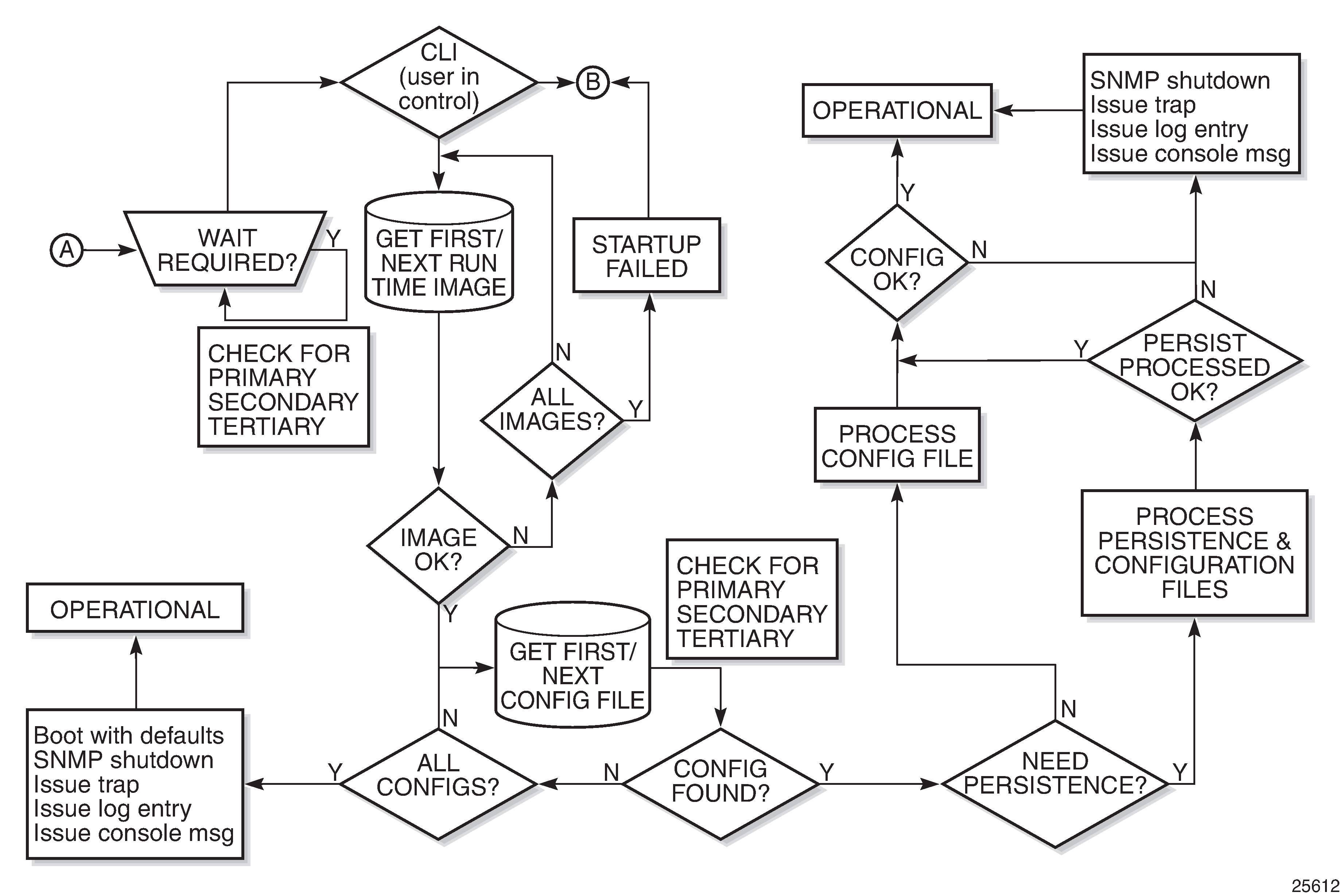When the system executes the boot.ldr file, the initialization parameters from the BOF are processed. Three locations can be configured for the system to search for the files that contains the runtime image. The locations can be local or remote. The first location searched is the primary image location. If not found, the secondary image location is searched, and lastly, the tertiary image location is searched.
If the BOF cannot be found or loaded, then the system enters a console message dialog session prompting the user to enter alternate file locations and filenames.
The boot loader can be interrupted during the boot sequence by pressing any key on the CPM console port. The operator must then type sros and press ENTER within 30 seconds or the boot loader continues to try to boot the system. This key sequence ensures that noise or misconfiguration does not inadvertently interrupt the boot sequence. If the operator types sros and presses ENTER within 30 seconds, they are brought to a console message dialog session prompting the user to enter file locations and other boot information.
When the runtime image is successfully loaded, control is passed from the bootstrap loader to the image. The runtime image first attempts to read the license file if one has been included in the bof. If a license file is found, it is activated. If there are any issues with the activation, a log event is raised but the startup processing continues with the reading of the configuration file. The runtime image next attempts to locate the configuration file as configured in the BOF. Like the runtime image, three locations can be configured for the system to search for the configuration file. The locations can be local or remote. The first location searched is the primary configuration location. If not found, the secondary configuration location is searched, and lastly, the tertiary configuration location is searched. The configuration file includes chassis, card, MDA, and port configurations, as well as system, routing, and service configurations.
Figure 1 displays the boot sequence.

The following displays an example of BOF output:
A:ALA-1>bof# show bof
==================================================================
Memory BOF
==================================================================
no autonegotiate
duplex full
speed 100
address 10.10.0.1/20 active
wait 3
primary-image cf3:\both.tim
primary-config cf3:\test123.cfg
primary-dns 192.168.10.20
persist on
dns-domain test.nokia.com
==================================================================
A:ALA-1>bof#